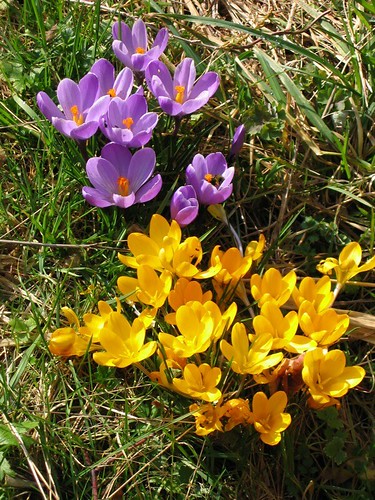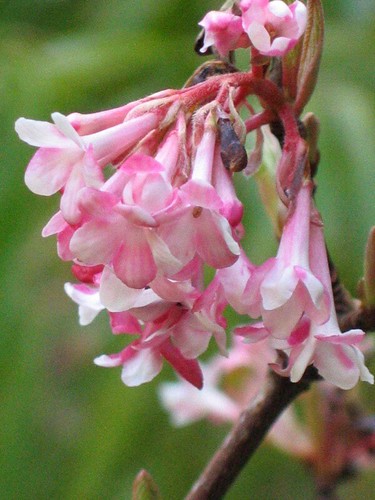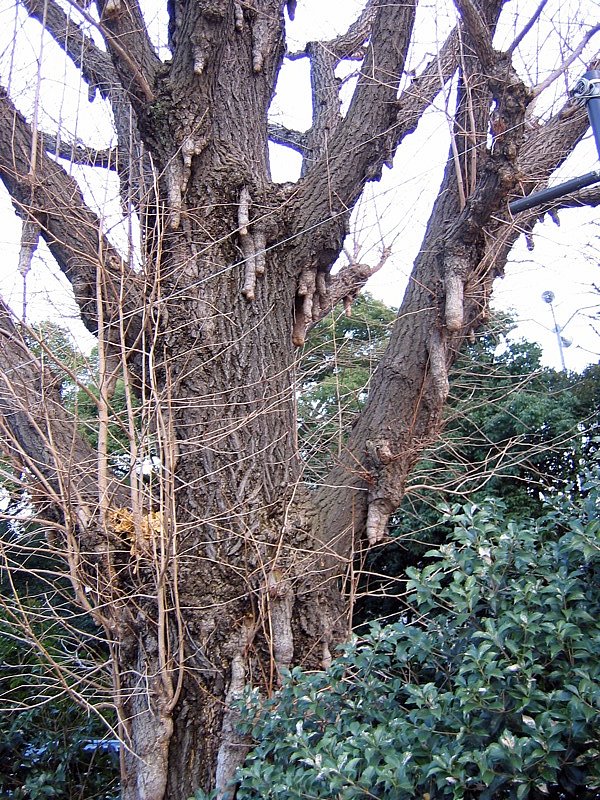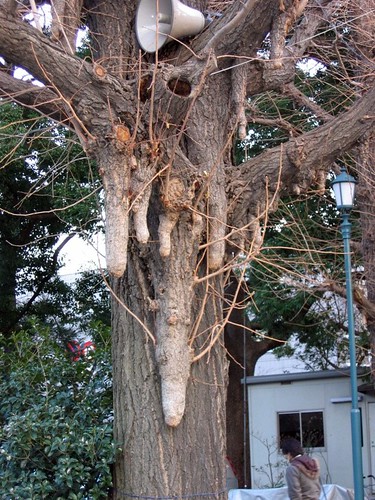Spending winter on the west coast of Canada is like living in a giant car wash with all the lights turned out. Spring however, comes relatively early, with the pussy willows and hazel catkins often making their appearances already by the end of January. By the time February is over, the crocuses have usually poked up their cheery little heads. Viburnum bodnantense is another extremely early shrub. Its pink flower clusters have a scent that reminds me of vinyl doll heads dipped in sugar.
|
||||||
|
Though it is one of the world’s most rapacious consumers of wood, Japan worships trees like no other place I’ve been to. Where else would such love and attention be lavished on a couple of four hundred year old plum trees, which, left to their own devices would have up and died ages ago? There is something intensely poignant about these venerable plums, brought from Korea back in 1609, to Matsushima’s Zuiganji temple. To keep them alive, the rotting trunks have been heroically patched with cement and the saggy, senescent branches propped up with poles. The trees are like ancient pets tended to by generations of Zen Buddhist monks, who are born and die in the span of time it takes the plum tree to accumulate a few infinitesimally thin growth rings. And the payoff? What is it exactly? A few ephemeral blossoms, pink and white, to herald the end of a long winter. It is heartening to know that despite the hundreds of years of turbulence, of typhoons, fratricidal wars and pestilence, an unbroken line of caregivers has thought these trees to be worth their attention. To be sure, the Japanese sense of duty must have had a lot to do with it, but there is something else too: a kind of appreciation of the fragile that in my mind has no equal anywhere else in the world. One of the great things about visiting Japan (for a tree geek like me) is being able to see some of the many old Ginkgo trees that are growing here. The Ginkgo, as some readers of this blog might recall, is a kind of living fossil, the last remaining species of a genus that was once widespread. Everything about the Ginkgo tree is strange. No one knows exactly when, or even if, they actually ever really went extinct in the wild and there is some evidence to prove that all the ones alive today are descendants of a few trees rescued in antiquity by early Buddhist monks. Ginkgo is one of the few trees that produces sperm that actually swims. And then there is this matter of the chichi or Gingko nipples, which form on older trees. Their function isn’t clear but it seems to be a kind of aerial root; an upside down version of the ‘knees’ one sees on the bald cypress trees (Taxodium) that grow in the swamp lands of the south-eastern United States. I photographed these wooden wonders that were dangling from a few of the Gingkos lining the approach to Tokyo’s controversial Yasukuni Shrine. Outside Asia there aren’t too many Ginkgos old enough to show this curious morphology. The term ‘nipples’ just doesn’t seem adequate to describe such girthy protuberances. |
||||||
|
Powered by WordPress · Atahualpa Theme by BytesForAll |
||||||








